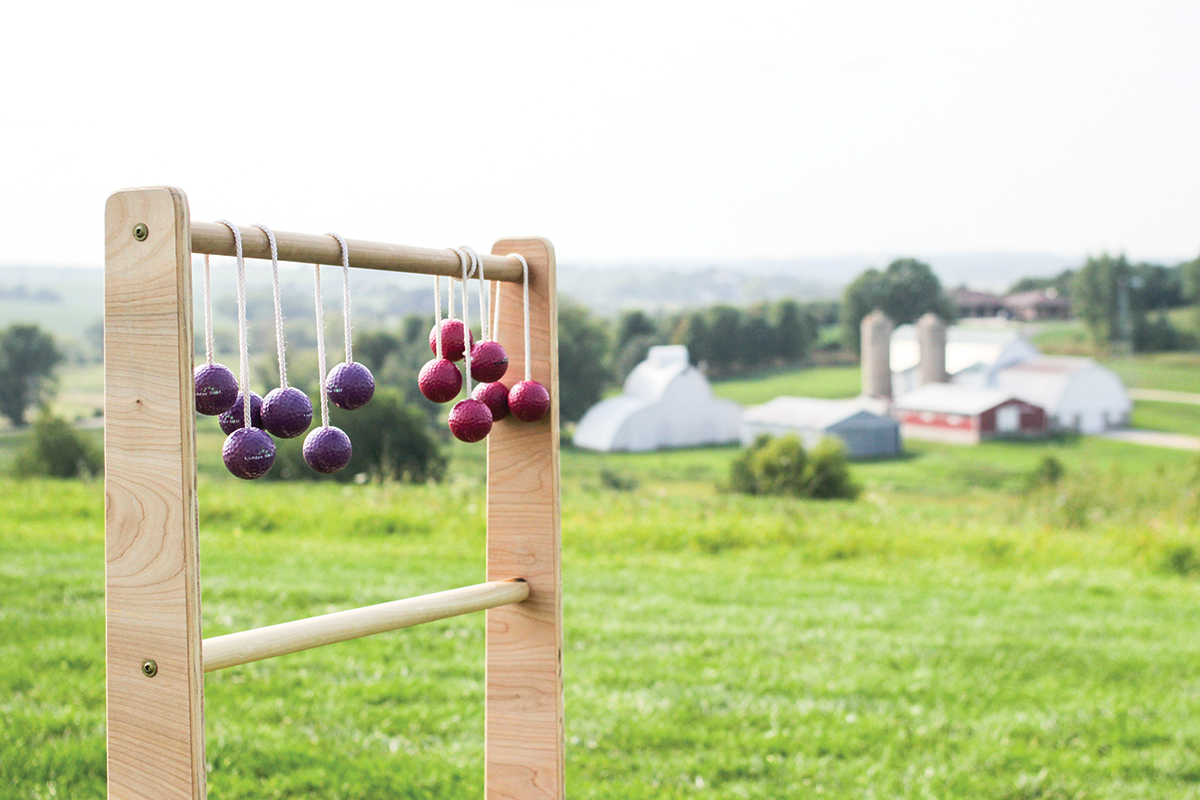Backyard family barbecues are one of the fondest memories for so many, young and old. Imagine an ice-cold lemonade in one hand and a burger in the other — the picture-perfect Fourth of July. These may be the staples for a successful barbecue, but if you want to take your backyard cookout to the next level, consider going all out on some all-American yard games.
Cornhole
The American classic! You can purchase this game or make it from scratch with a few simple materials and a handyman. Cornhole is played by two players or two teams of four. Each player or team takes turns throwing 16-ounce bags filled with corn kernels (or any other granular object) at a board with a hole in the far end. A bag landing in the hole scores three points, while a bag landing on the board scores one point. Cornhole uses cancellation scoring, meaning that after each round, you calculate how many points each team or individual has earned in relation to their opponent. For example, if Player A scored 12 points, while Player B scored seven points, Player A would be awarded five points for that round (their original 12 minus the seven points their opponent earned). Player B would earn zero points. The game continues until a team or player reaches 21 points.
Bocce
Bocce can be played with two players, or two teams of two, three or four, and you will need a setvof bocce balls. To start the game, randomly select which side will go first. They will then throw the smaller ball, the jack, from one end of the yard or court to the other end. (If you do not have the materials to create a bocce court, that’s okay! Playing in your backyard in a reasonably flat area works just as well.)
The team that threw the jack is then given the opportunity to bowl first. They will bowl a single ball, aiming to have it land as close to the jack as possible. Continue alternating turns until one side or the other has bowled all of their four balls. The player or team who has more balls close to the jack than the other team wins the round. You calculate their score by counting how many balls are closer to the jack than the closest ball from the opposing team.
Giant Jenga
Giant Jenga is just a much larger version of the classic game you’ve played at your kitchen table! This is a game you can easily make yourself with 54 wooden blocks. Start by building the tower with three blocks placed next to each other. To create the second layer, flip the blocks so they are facing the opposite way as the first layer and add three more. The idea of the game is to successfully pull out one block at a time only using one hand. Once you successfully pull out one block, add it to the unfinished layer at the top of the tower. The game ends when a player’s move causes the tower to fall!
Ladder Toss
This yard game involves throwing bolas, or two balls connected by a string, onto the rungs of a ladder You can easily assemble this yard game at home with PVC pipes, joints and T joints. The bolas can be created with nylon rope and golf balls tied on each end of the rope. Each ladder has three rungs, and each rung equals a different number of points. Typically, the bottom rung equals three points, the middle rung equals two points, and the top rung equals one point. After both teams have thrown their bolas, you pause to add up the points. The game continues until someone scores 21 points.
Horseshoes
Horseshoes is a yard game played with two people or two teams of two. The idea behind this game is to throw a horseshoe around a stake in the ground. To start the game, each player tosses one horseshoe at the stake on the opposite side of the yard. The team whose horseshoe lands closest to the stake then gets to go first. The winner throws their two horseshoes one at a time, followed by the opposing team. Once both teams have thrown their horseshoes, the points are added up and the next round begins. The game continues until one of the teams or players reaches at least 15 points.
4th of July Fun Facts!
- Americans will enjoy 150 million hot dogs during the Fourth of July.
- Americans spend more than $1 billion on fireworks for the Fourth of July each year.
- Fireworks date back as far as 1777 in celebration of the Fourth of July.
- The first official Fourth of July party was held at the White House in 1801.

